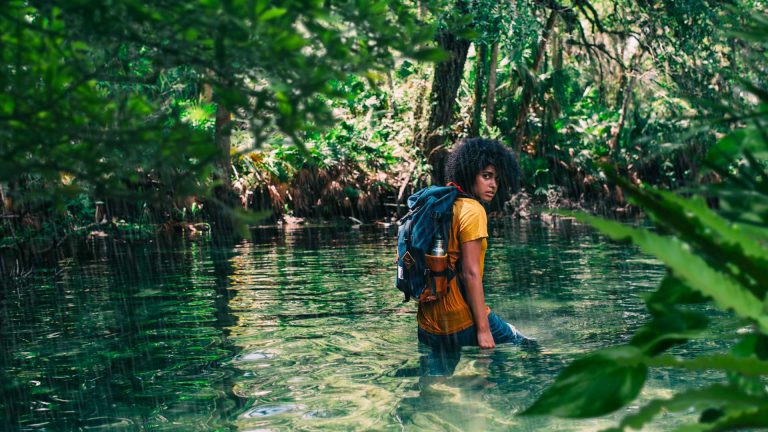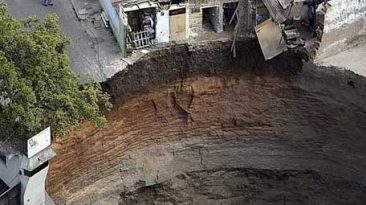You’ve finally made it! The trip of a lifetime. Wild nature, lush scenery, and exotic animals galore. It’s all good, as long as things go as expected. But in a matter of seconds, everything goes wrong.
You’re suddenly left alone in the Amazon. What do you do?
You are surrounded by the Amazon basin. The largest rainforest on Earth, sprawling across nine countries, is 6.9 million square kilometers (2.72 square miles) of harsh, unfamiliar ecosystem.
It’s overwhelming and you have nothing but your wits. What’s waiting behind this lust green jungle? Dehydration, hunger, heatstroke, sunburn. Mosquitoes carrying yellow fever, dengue, and malaria, wanting to suck your lifeblood.
Then there are the animals. The black caiman, bullet ant, the poisonous dart frog. The most venomous spider found anywhere, the Brazilian Wandering Spider, aka, the “banana spider.” Some of the world’s deadliest snakes, the green anaconda, boa constrictor, and the South American rattlesnake. And, lurking in the waters, piranha and the most dangerous shark on Earth, the Amazon River bull shark. You’re terrifyingly vulnerable in this strange land, and you know it.
So, what’s the first thing you should do? How can you protect yourself? And how can you get out?
Step 1: Use the S.T.O.P. Method
First things first, use the S-T-O-P method. STOP. THINK. OBSERVE. PLAN. The next choices you make could either save your life or end it, so stay calm, take a breath, and get your bearings. This is where you decide to stay put and wait for help or find your way back. If you abandon your initial ‘Point A’ location, leave a note telling when you left and what direction you’re heading. If available, take anything you can that will help you survive. Maybe a compass, water filter, lighter, knife, something to cover your face, or a mosquito net.
Step 2: Mark Your Trail
Break certain branches or drop something distinctive every so often. This will assist the rescue team in tracking you and also ensure you’re not walking aimlessly in circles. Walk downstream of any water you find, since this could lead you to a river and will give you a better chance of being found. If you can’t find water, look for animal trails, the sounds of birds, or swarms of insects. Following their movements can help guide you to a water source.
Step 3: Find Water
Water is the single most crucial thing that will help keep you alive. Humans can last up to two months without food, but only a few days without water. Dehydration symptoms can occur within an hour in humid conditions. If you don’t have a proper water filter or you can’t boil water, avoid drinking from streams and stagnant water. The last thing you need right now is getting sick from bacteria and parasites. Look for freshwater alternatives, such as droplets from leaves in the early morning. Specific plants like bamboo stalks and tree trunks will also collect water for you to stay hydrated.
Step 4: Find Food
Forget about trying to hunt for animals. This will expend too much vital energy. Avoid anything that doesn’t look familiar. Stick to citrus fruits and vegetables such as squash and cucumber, which are in abundant supply. So are coconuts and peanuts and cashews to maintain your strength.
Step 5: Find Shelter
You will need to shield yourself from the environment, especially at night. If you can’t find a covering, create one using large jungle leaves. Try and stay on higher ground in an open space to avoid falling trees and branches. To protect from mosquitos, rub sap from the eucalyptus or camphor trees on yourself. And try to sleep with a fire to ward off any bugs and curious predators.
Step 6: Protect Yourself From the Elements
The Amazon is full of creepy crawlies, with over 2.5 million species to keep you company. More than 50% are thought to live in the dense canopy and bugs are attracted to dark colors, so stay low and expose lighter colors, which can also help you spot nasty critters. Walk carefully and use a stick to test the ground in front of you to make sure you don’t encounter anything skulking beneath the mud. Avoid using your hands to touch things. Instead, a machete is a useful tool to help clear your path.
And never allow your feet to get wet. If your shoes aren’t waterproof, wrap your feet in plastic. Too much exposure to moisture will leave you open to bacterial infections and fungus. Also, you must defend yourself from the sun. Wear as much clothing as possible to protect your skin. If you don’t have sun protection, cover your skin with mud.
Step 7: Signal for Help
By far, your best chance to survive is to build a signal fire. If that’s not doable, leave an SOS for any planes passing by. Go big and bold, using tree branches, leaves, clothes, or rocks. Carve a huge message in the sand if you must. And if you spot a plane, use a mirror or anything reflective to shine sunlight towards it, because it may be a search party attempting to find your distress signal.
However, if you can start a fire, you must be wary that Amazonian trees are very flammable, especially in Brazil. Fires have been the leading cause of deforestation, so try and find an open clearing. No need to be trapped in the middle of a raging forest fire to top it all off. But don’t worry, we’ve got ways to help get you out of that alive too.
Sources
- “Yossi Ghinsberg: Lost In The Jungle, A Story Of Survival”. 2019. Throomers.
- “I was lost in the Amazon jungle” 2020. thejc.com.
- “Amazon Fish Species At Risk If Fires Destroy River Habitat”. 2019. nationalgeographic.com.
- “How I Survived A Plane Crash”. 2020. BBC News.
- “Stranded Pensioner Lived Off WASPS For 12 Days After Getting Lost In The Jungle”. Roper, Matt. 2014. Mirror.
- “Man Who Disappeared In The Amazon Jungle In 2012 Found Alive”. 2017. Esquire.


















